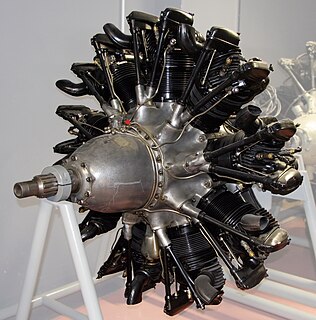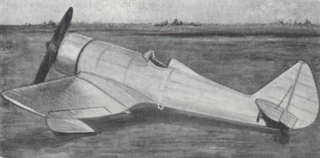
The Bloch MB.130 and its derivatives were a series of French monoplane reconnaissance-bombers developed during the 1930s. They saw some limited action at the beginning of World War II but were obsolete by that time and suffered badly against the Luftwaffe. After the fall of France, a few were pressed into Luftwaffe service.

The Bloch MB.210 and MB.211 were the successors of the French Bloch MB.200 bomber developed by Société des Avions Marcel Bloch in the 1930s and differed primarily in being low wing monoplanes rather than high wing monoplanes.

The Farman F.220 and its derivatives were thick-sectioned, high-winged, four engined monoplanes from Farman Aviation Works. Based on the push-pull configuration proven by the F.211, design started in August 1925 and the first flight of the prototype was on 26 May 1932. The definitive F.222 variant was the biggest bomber to serve in France between the world wars. One variant was designed as an airliner.

Hanriot H.230 was a French twin-engined advanced trainer. The construction of the aircraft was initiated in 1936 by Hanriot's chief designer Montlaur. The aircraft was produced by the nationalized factory SNCAC.

The Gnome-Rhône 14M was a small 14-cylinder two-row air-cooled radial engine that was used on several French and German aircraft of World War II. While having the same appearance, number of pistons (14) and two-row layout typical of Gnome-Rhône radial engines, the 14M was built to a smaller frame intended to power a lighter class of aircraft. It was designed with lower displacement and power, smaller in size and with less weight compared to the larger, heavier Gnome-Rhône 14N and its well-known predecessor.

The Gnome-Rhône 9K Mistral was a nine-cylinder 550 hp (405 kW) to 700 hp air-cooled radial engine, that started life as an enlarged Gnome-Rhône 7K with two extra cylinders.

The Loire 70 was a 1930s French long-range maritime reconnaissance flying boat produced by Loire Aviation.

The SNCAC NC.211 Cormoran was a large four-engined military transport aircraft for passengers and cargo designed and built by SNCAC from 1945.

The Farman NC.470 was a French twin-engined floatplane designed as a crew trainer for the French Navy. It was used in small numbers for both its intended role as a trainer and as a coastal reconnaissance aircraft at the start of World War II.

The IAR 15 was a low-wing monoplane fighter designed in Romania in 1933.

The Rogožarski PVT was a single-engined, two-seat parasol winged aircraft designed as an advanced and fighter trainer in Yugoslavia before World War II. Over 60 were built, serving with the Yugoslav Royal Air Force (YAF) until the fall of Yugoslavia in 1941. After that, some PVTs were used by the newly formed Air Force of the Independent State of Croatia, sometimes as ground attack aircraft.
The Bloch MB.480 was a French twin-engined torpedo-bomber/reconnaissance floatplane designed just before the start of the Second World War by Société des Avions Marcel Bloch. Only two were built, the French Navy deciding to use landplanes instead.

The SNCAC NC.150 was a prototype French high-altitude bomber aircraft designed and flown just prior to the start of the Second World War. It was a twin-engined monoplane, with a third engine driving a supercharger. Although testing was promising, and orders were planned for a modified version as a back-up for the Lioré et Olivier LeO 45 and Amiot 354 bombers, the surrender of France in June 1940 ended development with only the single example being built.
The Farman F.420 was a twin engine monoplane, built in France in the mid-1930s to compete in a government contest for an aircraft capable of fulfilling bomber, fighter and reconnaissance roles. Two prototypes were constructed but no production followed.

The SNCAC NC.4-10 was a twin-engine floatplane torpedo bomber built in France in the late 1930s. It was one of several prototypes competing for an Navy specification but no contracts were awarded after the military lost interest in the type.
The Bernard 160 was a three engine, multi-role monoplane designed in the early 1930s to meet a French government call for aircraft suited to policing and medical duties in its African colonies. Two prototypes were built and tested, but no further orders were placed.

The SNCAC NC-600 was a prototype French twin-engined long-range fighter aircraft, developed by SNCAC from the earlier Hanriot H.220 fighter. The type never entered service, with development being ended by the French surrender in June 1940.

The Lorraine Hanriot LH.130 is a French racing aircraft designed and built in the early 1930s, to compete in the Coupe Michelin air races.

The CAMS 52 was a twin-engined floatplane torpedo-bomber. It was not ordered by the French Navy and only one CAMS 52 was completed. It first flew in the summer of 1930.

The Levasseur PL.200 was an observation seaplane built by Levasseur in the mid-1930s. It was a high-wing monoplane with a short, all-metal fuselage nacelle at mid-span, and a wing made of metal.



















